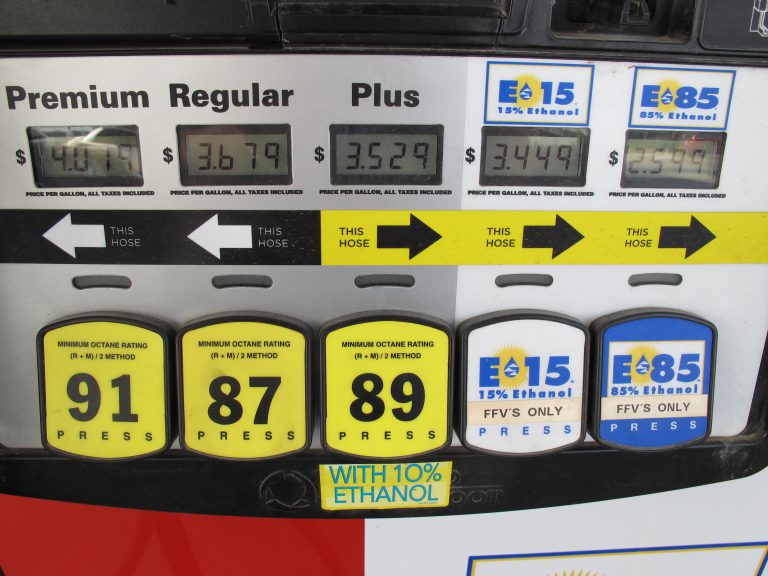President Donald Trump’s administration will “unleash the power of E15,” allowing the 15 percent gasoline-ethanol blend to be sold year-round.
The announcement, made public this week at a rally in Council Bluffs, Iowa, is being welcomed by corn growers and biofuel groups. But it may take longer for farmers like Kelly Nieuwenhuis of Primghar, Iowa, to feel the positive impact of E15 than they would like.
“As a farm operator, 95 percent of the corn I produce goes through a corn ethanol plant, so we see this announcement as a win,” Nieuwenhuis said. With the current low corn prices and trade war, any news signaling a potential increase in demand for his crop is good news.
University of Illinois ag economist Scott Irwin cautioned that, in the short term, “it’s not going to provide any relief from the low prices and income issues we’re experiencing right now in Corn Belt agriculture.”
Nationally, only about 1 percent of filling stations are equipped with the correct pumps for E15, which Irwin said will slow the rollout.
“We probably have between 1,400 to 1,500 offering E15 out of 125,000 stations,” Irwin said. “That’s a tiny sliver of our fueling capacity.”
Ethanol groups expect those numbers to grow quickly once the Environmental Protection Agency lifts seasonal restrictions on E15.
“There have been many retailers sitting on the sidelines waiting for this day to come,” according to Emily Skor of the biofuel trade group Growth Energy. She added that the U.S. needs to “maintain a strong Renewable Fuel Standard,” to pressure oil companies to invest in E15 infrastructure.
Another hurdle
But other Trump administration policies seem to be taking the pressure off of oil companies, Irwin said, which will end up slowing E15’s growth.
Oil companies are required to buy Renewable Identification Numbers, or RINs, to meet the ethanol mandate. And they’d like to keep the cost of those RINs as low as possible.
One way to do that is by blending more ethanol with gasoline by way of something like E15. Selling more ethanol would increase the supply of RINs.
Another way to lower costs is to reduce demand for RINs. According to Irwin, that’s what the EPA has done by exempting some small oil refineries from having to purchase their full quota. As long as the exemptions continue and RINs are cheap, Irwin said, there’s less incentive to switch to E15.
“That’s been a long-run goal of the industry and in that sense it’s a win,” Irwin said. “But I don’t see how it’s going to expand at all without higher RIN prices. And at this point under the Trump administration, I don’t see any evidence that, unless forced to by a court, there will be any change in the small refinery exemption policies.”
Skor said that’s an ongoing topic of discussion with the White House and EPA, adding that the group is “hopeful” that E15 is “the start of a new chapter at EPA.”
Follow Grant on Twitter: @ggerlock
9(MDM5MjE5NTg1MDE1Mjk1MTM5NjlkMzI1ZQ000))

